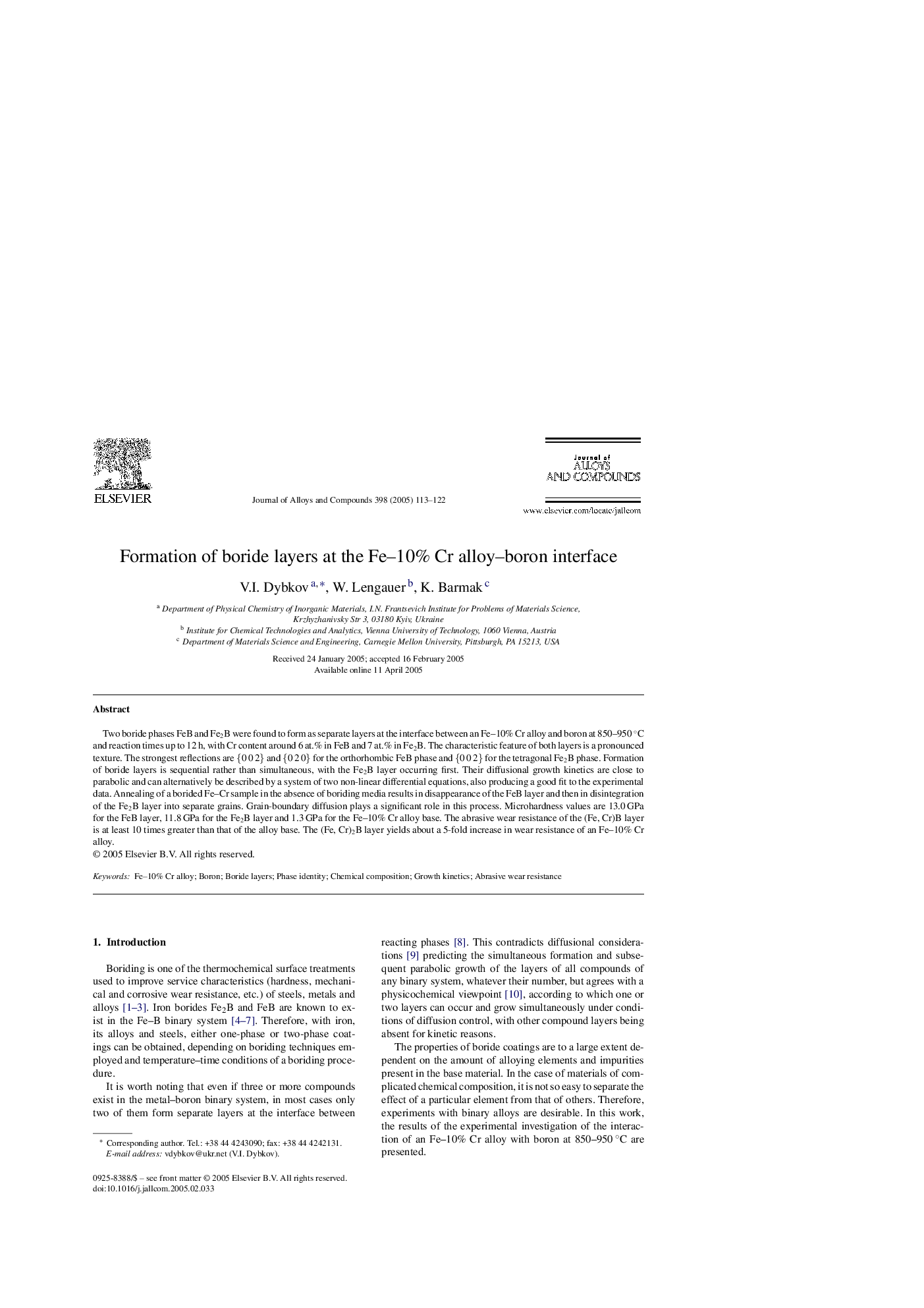| Article ID | Journal | Published Year | Pages | File Type |
|---|---|---|---|---|
| 9803549 | Journal of Alloys and Compounds | 2005 | 10 Pages |
Abstract
Two boride phases FeB and Fe2B were found to form as separate layers at the interface between an Fe-10% Cr alloy and boron at 850-950 °C and reaction times up to 12 h, with Cr content around 6 at.% in FeB and 7 at.% in Fe2B. The characteristic feature of both layers is a pronounced texture. The strongest reflections are {0 0 2} and {0 2 0} for the orthorhombic FeB phase and {0 0 2} for the tetragonal Fe2B phase. Formation of boride layers is sequential rather than simultaneous, with the Fe2B layer occurring first. Their diffusional growth kinetics are close to parabolic and can alternatively be described by a system of two non-linear differential equations, also producing a good fit to the experimental data. Annealing of a borided Fe-Cr sample in the absence of boriding media results in disappearance of the FeB layer and then in disintegration of the Fe2B layer into separate grains. Grain-boundary diffusion plays a significant role in this process. Microhardness values are 13.0 GPa for the FeB layer, 11.8 GPa for the Fe2B layer and 1.3 GPa for the Fe-10% Cr alloy base. The abrasive wear resistance of the (Fe, Cr)B layer is at least 10 times greater than that of the alloy base. The (Fe, Cr)2B layer yields about a 5-fold increase in wear resistance of an Fe-10% Cr alloy.
Related Topics
Physical Sciences and Engineering
Materials Science
Metals and Alloys
Authors
V.I. Dybkov, W. Lengauer, K. Barmak,
